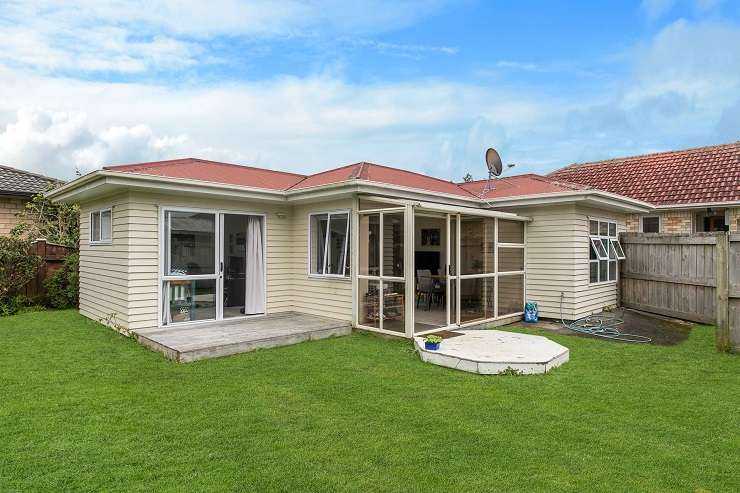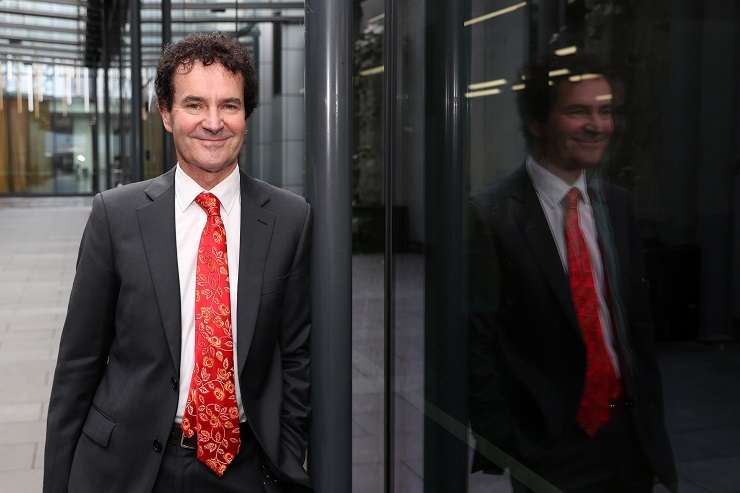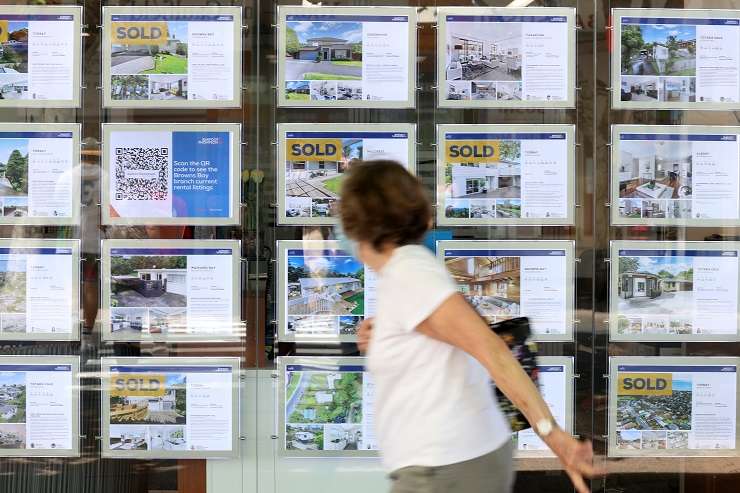As more and more properties zoned for density are passed in at auction rooms around the city in the past few weeks, OneRoof asked experts if the city might be reaching peak development.
“No,” said economist and OneRoof columnist Tony Alexander.
“I wouldn’t say development frenzy has peaked. But I would say that the frenzy to buy land to start developments has peaked.
“Many developments that were planned are not going ahead because of the expected issues around materials, around getting contractors or because [the developers] can’t get finance.
Start your property search
“That bit is really important. I know banks, and I know that they pull back when a sector is booming. There are lots of grey-haired people who recognise that it is over. The high-level developers stepped back a year ago.
“The boom is reaching an end.”

The property on Watson Place, Papatoetoe, sat on 1075sqm land zoned for density, but will not be developed. Photo / Supplied
Alexander admitted to OneRoof that the peak was sooner than he had forecast (he had pegged autumn, not now for the turning point) because of the speed of the boom through this Covid-19 year, but this was good news.
“People might panic and cry ‘this is a recession’, but actually this is a re-balancing. There are more listings, that means first-home buyers can take their time, vendors become more realistic and decide to sell first before they buy, so they’ll list.
“It’s more normal conditions. We’ve pulled back from unsustainable, it’s not a panic.”
Alexander’s own surveys of mortgage brokers last week, and real estate agents this week, already show that first-home buyers have fallen away, the FOMO effect is the lowest it’s been since Covid arrived last year, and investors have melted away, he said.
In his market newsletter this week, Alexander pointed out there is not a fundamental shortage of property in most parts of the country.
“At some stage next year or in 2023 talk of shortages will disappear,” he said.

Economist Tony Alexander says banks have already picked the end of the development boom. Photo / Fiona Goodall
“One or two people are starting to wonder who will occupy the many townhouses being built in Auckland. There is no longer a shortage of developable land, the idea that all these Kiwis would come back to New Zealand and cause a shortage, well that’s just bollocks, the population has dropped for the first time ever.”
Ray White’s Tom Rawson agrees.
He co-owns offices in South Auckland’s Manukau, Manurewa, Mangere and Mangere Bridge that are often considered bellwethers of the state of the city’s development market. And it’s not just South Auckland; about 25% of his business is now in west and central suburbs.
“We peaked in October. In April to June, new stock was coming in and selling at an even faster pace, the bucket was emptying faster than we could fill it.
"Now in November and into December, we have more than twice as many listings, but they are slower selling. The bucket is starting to overflow. In December we have 258 listings, in September and October we had 111 and 75.”
Clearance rates at the company’s auctions dropped to 56%, from highs of 80%, even 100% through September and October, and average prices have softened back to $1.087 million this month after October’s peak of $1.147m (still well up on January’s $870,000, he noted).
Rawson added that buyers were wising up to the “pretty stink” phenomenon of property flippers turning over properties in two or three months adding another $100,000-$300,000 to the price, and those speculators were exciting the market. At one point in the middle of the year, they’d made up 20%-30% of the market.

Building expert John Tookey says that developers who have done their building sums are keeping their eye on the exit. Photo / Fiona Goodall
He said that while there was still buyer appetite for new builds, with the time lag between buying land and settling sales of townhouses now stretching out from 10 months to more like 18 months, developers were stepping back.
“They’re doing the numbers, at those land prices it won’t work for them. They’re being beaten by folk buying to hold on, happy to wait for some more gains.
“A good example is a property in Watson Place, Papatoetoe we expected to go for $1.075m that sold for $2.14m this week. An investor will just hold on to that, it’s a nice home and income and that’s important for lending, they won’t be bowling and re-building.”
Rawson said that there was still appetite from buyers to buy the new homes, at price points that start around $800,000. He is horrified by the stories of developers going back to buyers to extract more money before they can settle on their nearly-ready new homes.
“I’ve heard of one, where the developer is going back to ask buyers for another $40,000 or they’ll invoke the sunset clause to get out of the deal. It’s just ransom money.”
But the density push is far from over, and land with zoning for density is by no means tapped out.
“Probably not even 20%, if that, of the land that could be developed has been bought by developers. It tends to go street by street. One or two or five developments will pop up and then all the neighbours say ‘we’re out of here’ and sell up.”
Auckland Council senior economist Shane Martin told OneRoof that they were still digging through the recent data to see what the lag was between new homes being consented in the city and homes being completed and ready to move in.
“Earlier data show that 75% of homes that get consented are built within two years, with 85% to 90% being finished eventually,” Martin said, adding that anecdotal reports suggests that the mix of lockdown, labour and materials shortages may push that gap out this year.
Economists are also refining their housing supply model to see how much the gap between demand and supply in Auckland has narrowed, comparing revised population estimates from Statistics New Zealand which show for the first time a drop in the number of people living in the city compared to a steep rise in the number of completed dwellings.
“We don’t know when the two lines will cross, but we do know that two years of a pause in inward migration and lots of new housing means we will reach a point where we have enough housing.
“The days of 40,000 new people and only 8000 new houses are over. We’re at 20,000 new houses and no new people, now.”
Martin added that estimates on supply shortfalls in the city were not simple as modelling was influenced by a lot of unknowns such as changes in policy settings for travel and migration next year, likely drops in household size when sufficient supply alleviates overcrowding and lags between consents and actual new houses ready to move into.
John Tookey, department head and professor at AUT’s School of Future Environments and a science lead for the government’s National Science Challenge Building Better Homes, Towns and Cities told OneRoof that while Auckland hasn’t yet reached ‘peak developer’ there are a lot of people “keeping an eye on the exit.”
“We’ve seen this happen before, people see the next downturn and ask ‘how do I bail out to a safe place?’
“There are the last ones going in like Flynn, dazzled by the potential returns, versus the cerebral ones being a bit more circumspect. There’s a faint sense the good times might be ending.”
Like Alexander and Rawson, Tookey points to the mix of increased building costs, increased cost of finance, unknowns about supply chains and future costs that add to the build risk.
“It used to be the cheapest mid-quality terrace or standalone houses cost $2000 to $2500 per sqm to build. Now it’s more likely over $3000, even over $3500 is not unreasonable.
“Bear in mind we’re dealing with an easing off by the Reserve Bank [to curb inflation], that will make serious inroads.”















































































